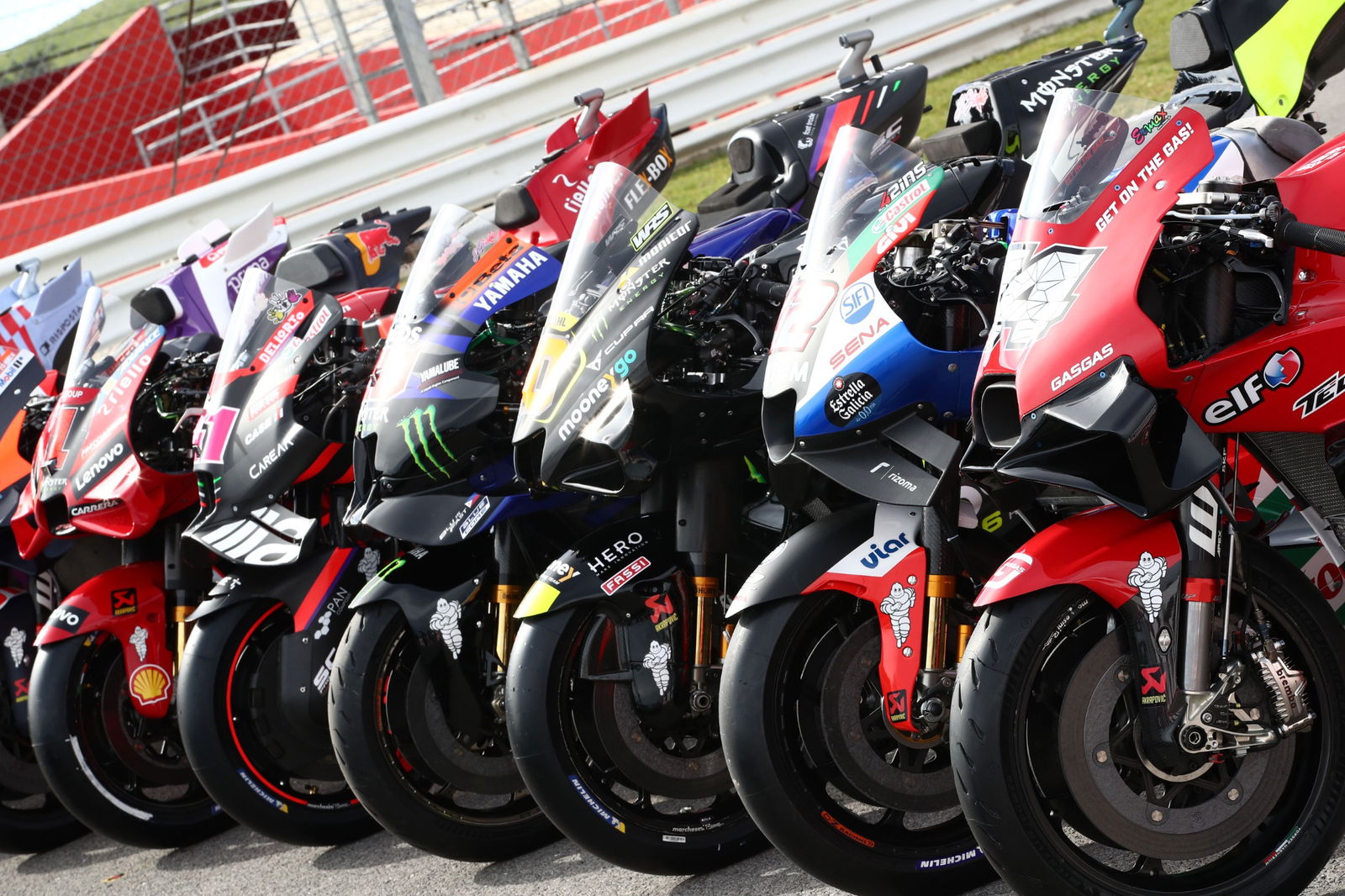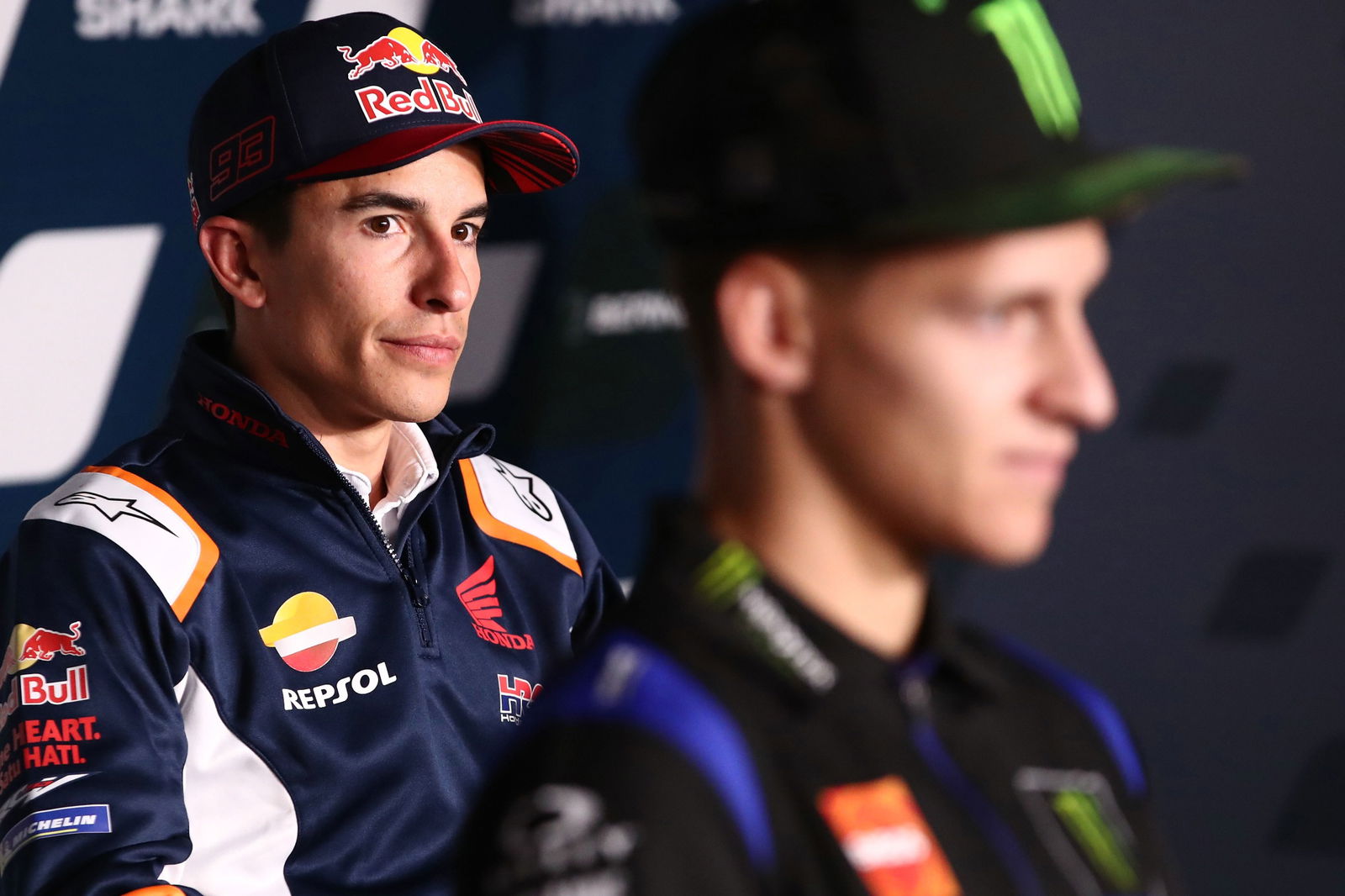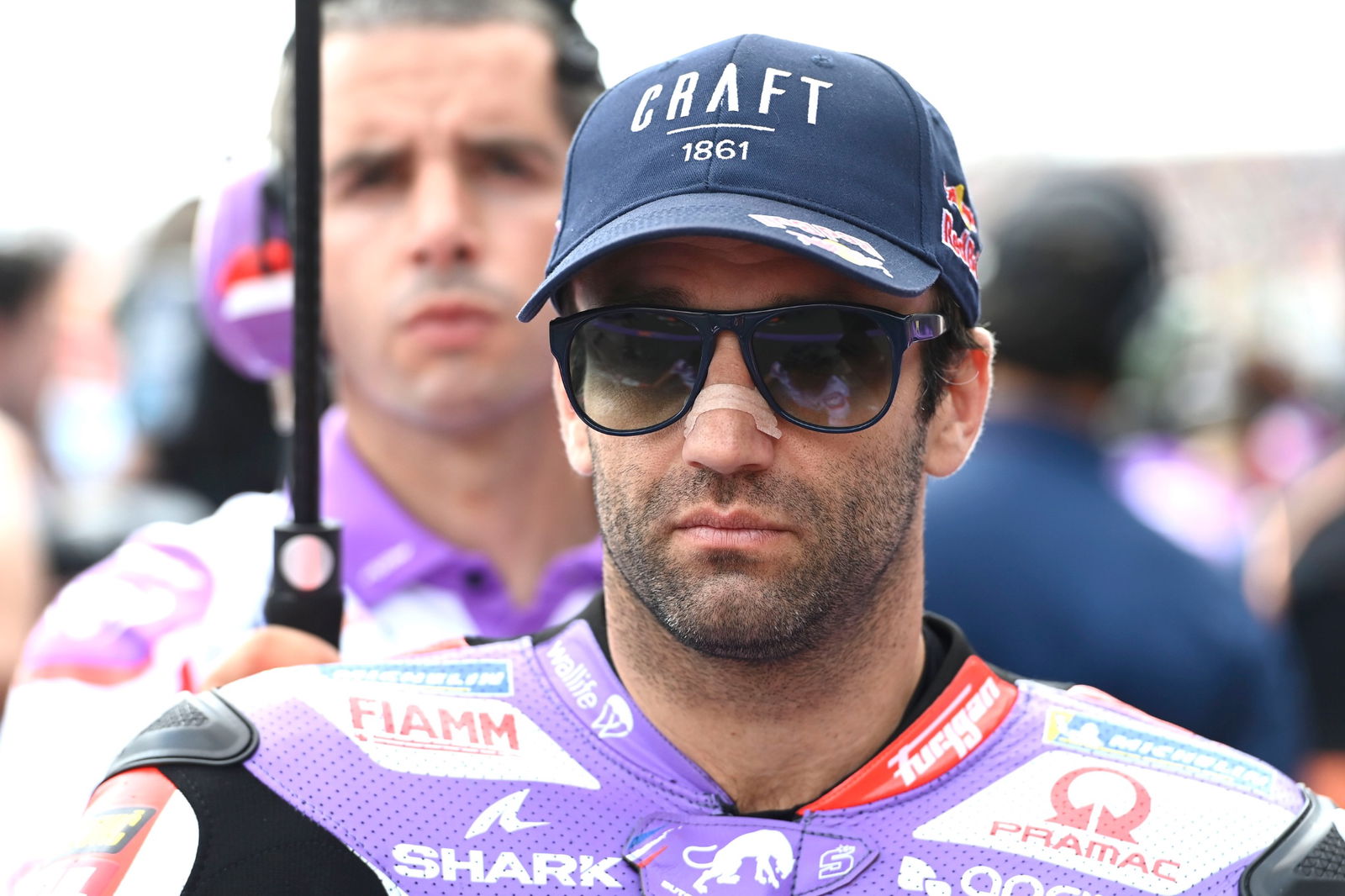Michelin: MotoGP aero effect is real, what we’ll change for 2025 front - Exclusive interview

Major changes to aero and ride height rules are not expected until the next five-year contract with the MotoGP manufacturers begins in 2027.
But Michelin is already working on its own solution in the form of a next generation front tyre, a prototype version of which is set to debut in testing at Misano later this year.
The bad news is that, because front tyre performance is so critical, it will not be introduced for MotoGP races until 2025.
Crash.net spoke to Michelin’s MotoGP boss Piero Taramasso about rising front tyre pressure in ‘dirty air’ and the changes Michelin is planning to make for the future.
- Brad Binder: Blessing to have a fast team-mate - and Jack Miller’s Ducati knowhow
- Pol Espargaro on track at Barcelona before Goodwood
- Sam Lowes: Acosta, Arbolino deserve MotoGP | ‘I can’t do that’ like Rins
But we began with the related topic of running low tyre pressures to compensate for the phenomenon, prompting the development of MotoGP’s new real-time monitoring system.
With the system now in the final stages of testing, punishments for breaching the minimum working pressures could begin from the next round at Silverstone…
Crash.net:
Piero, riders often talk as though lower pressure is always faster, but what's the crossover point?
Piero Taramasso:
It's not something automatic [that lower is faster]. It depends on the conditions. If it's hot, if it's cold. But it's not low pressure and you go faster. This is not a standard rule.
For a tyre to work, they need pressure. The more pressure you put, the more temperature you generate, and temperature is related to grip.
If you are not able to generate temperature, the tyre doesn't give you grip. But when the conditions are very, very hot, if you stay a little bit lower [pressure], you help the tyre, you don't overheat the tyre.
Crash.net:
So it depends race by race?
Piero Taramasso:
It can change, but again our tyre is designed to work at the minimum pressure given [1.88 bar front, 1.7 bar rear]. You cannot go lower because the risk is that you break the construction, the carcass. So you have to respect this minimum pressure.
Crash.net:
What exactly is the risk when pressure goes too low?
Piero Taramasso:
If it deflects or moves too much the risk is that you break the tyre. So it's not the heat, it's a mechanical failure.
Crash.net:
Riders often speak of difficulties when they are following other bikes because the front tyre pressure goes up. Do you see that on the data?
Piero Taramasso:
Yes. This is real. And this is normal. This is an aerodynamic effect. You see it in motorbikes, you see in Formula One. When you are following somebody, you get less fresh air. Less cooling. So the temperature goes up. If it goes up too much, you overheat and you lose some feeling.
This is true, but this something that is part of the package and something that you have to manage, like you manage the rider effort, like you manage the engine, the tyre. This is part of the game.
Crash.net:
Because of that ‘dirty air’ overheating affect, some riders suggest the new real-time pressure punishments should only be for the rear tyre, not the front?
Piero Taramasso:
It needs to be both [front and rear] because both tyres work in the same way and you can have the same problem with low pressure.
Of course, the rear is much easier to manage because the rear is protected by the engine. So it doesn't change so much.
The front is more sensitive because [it is exposed], and also because you load and unload much more the front of the bike than the rear. So like I said, you have to manage the way you brake, the way you stay in the line.

Crash.net:
As well as wings, there are also ride-height devices, what sort of impact do they have on the tyres?
Piero Taramasso:
Aerodynamics, bigger brakes - that also generate a lot of heat, which goes in the wheel to the tyre - and ride height devices: These three technical solutions all together mean we saw much, much more load on the front tyre.
So riders can brake later, stronger, and put more load on the front. But this model of front tyre is in its seventh season. It was not designed [for these extra loads].
Crash.net:
That’s why you’ve needed to make the new front tyre?
Piero Taramasso:
Yes. There’s been a big, big change in the last 2-3 seasons.
The bikes have made a very, very quick evolution. So now we need to change the tyre to follow the bike evolution.
That's why we are working on a new tyre that if everything is going well, we will try in the IRTA test at Misano.
This [new] tyre is designed to work at a lower working pressure, so we aim for 1.7.

Crash.net:
What else will change with the new front?
Piero Taramasso:
We’ve changed the construction. The profile is different. Also, because it will be bigger, so more volume, it will be less sensitive [when following]. So all the design is to improve that area, to be less sensitive. It will also give riders more feeling when they brake and going into the corner because a bigger contact patch means more feedback.
Crash.net:
Is there any chance of introducing it for 2024 rather than 2025?
Piero Taramasso:
No, no. For a front tyre you need a long time to evaluate it. So if everything goes well by the end of the season, we can provide the first prototype and then test it throughout 2024, at the [official] IRTA tests. Get all the data and then introduce for racing in 2025.
Crash.net:
Returning to the tyre pressures, what information do the riders have on the bike?
Piero Taramasso:
It depends on the rider and the manufacturer, but they can all have pressure information available. For example, a dashboard light that means, ‘be careful, you’ve gone over 2.1or 2.2’. The working limit.
It’s important to point out that we are always talking about staying within the ‘working limits’. It’s not a minimum pressure starting pressure. That’s why the real time data is so important.
Now we are around 1.8 minimum [for the front] and you have to stay above that pressure for half of a race.
So you can start low, you can start with 1.4-1.5 for the front for example, and then if you go up 1.55, 1.6, 1.65, 1.7, 1.8 and then stay over 1.8 for half the race it’s okay.
Then we know that up until 2.15 is manageable. But if you go over 2.2, you start to lose some feeling. So at that point you have to do something to cool down the tyre [when you see the dashboard light].
Even before the new real-time system, we were following all the data and if somebody went too low, we were warning them with the help of IRTA and Dorna. It’s a very important issue for us.


